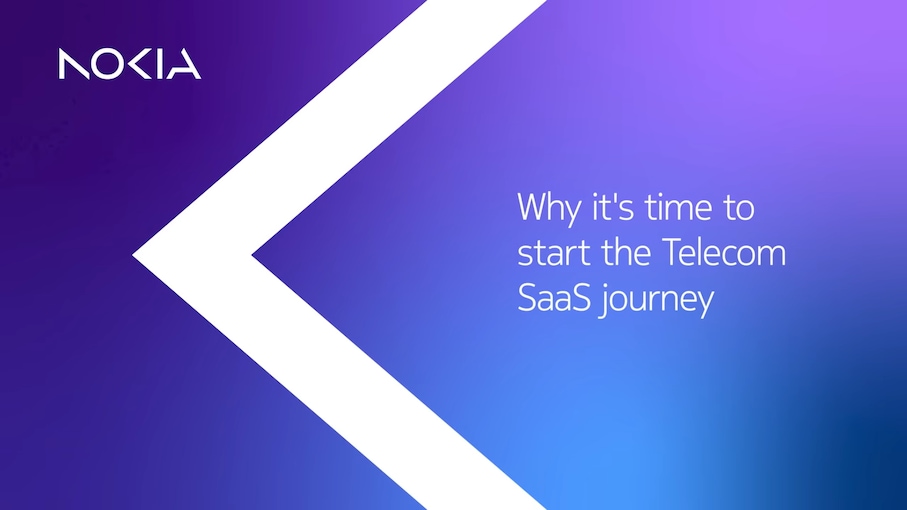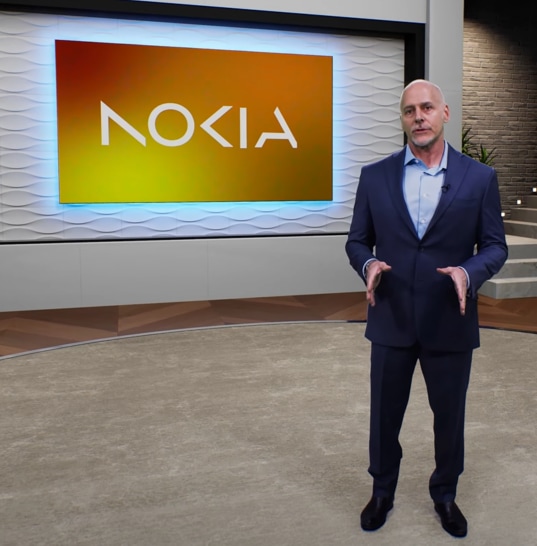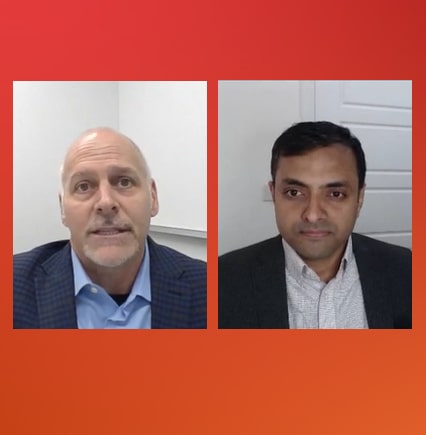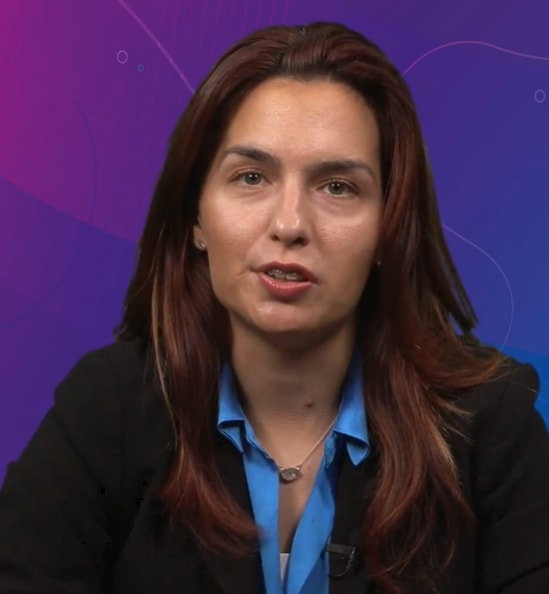Telecom SaaS
Innovate at scale

What is Telecom SaaS and how does it work?
Telecom SaaS is a service delivering a business outcome that is bought as a subscription and based on cloud-native software. It’s delivered with a fully digitalized business experience and a fully automated services lifecycle, that is designed for any carrier-grade network. Simply put, with the software-as-a-service model, communication service providers are provided access to the software they need instead of buying it outright, typically through a usage-based subscription purchased on a monthly or yearly basis.
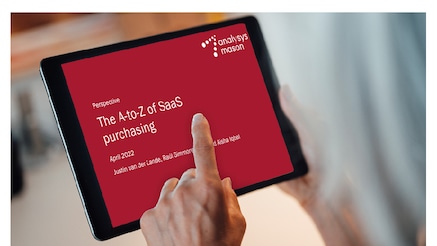
White paper
Analysys Mason: The A-to-Z of SaaS purchasing
The game is afoot - a Nokia series
Three experts, one mission: protect the network at all costs.
Nokia Telecom SaaS has achieved SOC 2 Type 1 compliance
At a high level, SaaS is a type of cloud service model. SaaS solutions reside in cloud environments (which are managed by a dedicated cloud vendor) and are often integrated with other software offerings from the same SaaS solution provider. Well-designed SaaS architecture must be able to scale and accommodate hundreds or even thousands of users who will be accessing the software simultaneously over the cloud or the web.
Compared with the traditional approach of installing and maintaining software on-premises, with the SaaS model telecom companies don't have to worry about adding another server on which to run the software. The SaaS provider takes care of all server capacity planning. Telecom companies only need to enable a new SaaS offering — and they get the flexibility to scale their SaaS use up and down based on specific needs.
In addition, because the software is delivered over cloud-based architecture, telecom companies do not need to download upgrades or reinstall new versions of a product. Any updates or patches to a service are handled by the SaaS provider.
How to think beyond the standard IT definition of SaaS, to include the requirements of telco-grade workloads?
What appears to be a nuanced difference between the definitions of IT and Telecom SaaS is that they are designed to handle the rigors of managing telco workloads. Keep in mind that when an IT SaaS workload fails, that service is effectively “off-the-grid”. In contrast, when a telecom SaaS workload fails, the grid is subsequently at risk because the role of a Comm SPs is to provide the grid itself! So, the seemingly nuanced difference is not really a nuance at all. Rather, Telecom SaaS involves a significant degree of specialized capabilities required to support carrier-grade availability, scalability, resiliency, performance, and security.
Automating current tools and operations in the telecommunications industry is a step in the right direction, but it is not enough to keep up with the rapidly evolving demands of the market. While automation can help streamline processes and improve efficiency, it does not address the need for more flexibility and scalability in the face of ever-changing customer needs and technology developments.
Telecom Software as a Service (SaaS) offers a new vehicle for the industry to meet these needs. SaaS allows telecommunications companies to access the latest software and technologies without the need for large capital investments or extensive in-house IT resources. This means that they can quickly and easily adapt to new developments, such as 5G, IoT, and edge computing, and offer new and improved services to their customers.
In addition, SaaS also provides a more cost-effective and flexible solution for the telecommunications industry, allowing companies to pay for only what they need and scale up or down as required. This will be crucial for the telecom companies to stay competitive in the market.
Overall, automating current tools and operations is a necessary step, but it is not enough for telecommunications companies to remain competitive in today's fast-paced digital world. Adopting Telecom SaaS is necessary to keep up with the changing demands of the market and stay ahead of the competition.
Telecom SaaS solutions enable communication service providers (CSPs) to:
- gain better better control over their communication expenses
- optimize network usag
- reduce energy consumption through better asset utilization
Additionally, Telecom SaaS solutions provide real-time network data and analytics, which can help companies monitor and reduce their carbon footprint, extends hardware life with less HW consumed, improve their supply chain transparency, and identify areas for improvement in their ESG practices.
By adopting Telecom SaaS solutions for telecom management, CSPs can not only reduce costs but also promote sustainability, which can ultimately enhance their ESG performance and reputation.
What are the benefits of Telecom software-as-a-service?
Telecom SaaS is about improving value and reducing complexity by providing software that is always the latest version and consumed purely on demand through a subscription, eliminating large up front capital expenditure; by freeing CSPs of the burden of putting their networks through software maintenance and updates; and, by accelerating CSPs’ ability to launch new services faster and see “time to value” quicker.
Faster time to value
Telecom providers are under constant pressure to innovate and launch new services quickly in order to stay competitive. SaaS enables providers to deploy new services and make changes to their network infrastructure in a fraction of the time.
Cost-effectiveness
Traditional, on-premises, telecommunications solutions, can be costly to purchase and maintain. SaaS solutions, on the other hand, are typically offered on-demand, which means that you only pay for what you use.
In addition, transitioning to a SaaS business model expedites procurement, installation, or set-up processes and lets CSPs experiment with a large variety of services with a limited-time subscription.
Greater business agility
Telecom SaaS solutions are designed to be scalable, which means that they can grow with your business. As your business expands and your needs change, you can easily increase to reduce capacity and add or remove features without the need for expensive upgrades.
Better reliability
Software-as-a-service solutions are typically hosted in a public cloud, which means that they are maintained and updated by the provider. This eliminates the need for your business to handle software updates and maintenance, which can be both time-consuming and expensive.
ESG acceleration
By using Telecom SaaS solutions, CSPs can gain better control over their communication expenses, optimize network usage, and reduce energy consumption through better asset utilization.
By adopting SaaS solutions for telecom management, CSPs can not only reduce costs but also promote sustainability, which can ultimately enhance their ESG performance and reputation.
Secure by design
It is important for telcos to appreciate how comprehensive, rigorous, and highly evolved SaaS and public cloud security are today. The technologies and procedures that are in place, and the resources that are dedicated to security, make Telecom SaaS highly secure, like traditional on-premises software deployments.
A journey from adoption hurdles to differentiated business!
With telecom SaaS, communications service providers access the software they need to run their networks on demand as a subscription-based service. In doing so, they can realize faster time to value, improved financial performance, and greater business agility. Despite these advantages, some have reservations about adopting the SaaS model.

White paper
Appledore Research: Agility with control
Total Cost of Ownership
Non-SaaS deployments require communication service providers to maintain their own physical or cloud infrastructure, resulting in additional costs related to infrastructure, logistics, power, cooling, and storage space. Additionally, dedicated in-house expertise is necessary to manage and operate the hardware or cloud infrastructure, leading to significant expenses for staff training or hiring. In comparison, SaaS vendors handle all these aspects for a predictable subscription fee. This approach spreads the investment risk over time, shared between the CSP and the SaaS vendor.
Overall, the TCO of SaaS is much better compared to the non-SaaS approach. Research by Analysys Mason indicates that transitioning from on-premise software to SaaS can reduce CSPs' IT costs by 25% over five years.
Control
While SaaS adoption may appear financially beneficial, its implementation also implies a transformation in operational methods and the evolving dynamics among suppliers, telecommunication companies, networks, and end-users. This transformation encompasses shifts in ownership, accountability, and control.
It's essential to consider the broader context of the "as-a-service" (aaS) paradigm. The rise of aaS is closely linked to a response against excessive centralization, which often stifled innovation, increased costs, and hindered business agility. This shift is evident in the rapid growth of enterprises that have harnessed the SaaS model and broader ecosystems to exert precise control, but on their own terms.
CAPEX vs OPEX
Communication service providers (CSPs) often associate software-as-a-service with operating expenditures (OPEX). However, there are situations in which treating SaaS subscriptions as capital expenditures (CAPEX) can be advantageous.
CAPEX spending allows for depreciation over time, reducing the overall subscription cost and improving the CSPs' financial balance sheets. The decision to categorize SaaS subscriptions as CAPEX is made by CSP accounting teams and guidance can be sought from SaaS vendors like AWS and Azure.
Factors to consider include subscription duration, upfront costs, expected benefits, and the CSP's financial situation.
Learn more about the financial aspects of SaaS adoption from this white paper published by TBR.
Security
Compliance and security officers are sometimes reluctant to embrace SaaS due to fears that workloads and data are moving outside controlled environments. The public cloud seems especially risky, raising concerns about data security, data privacy, data residency, and data sovereignty.
What’s more, SaaS vendors invest substantially more in security systems, technologies, and capabilities than most CSPs could match. They even offer additional security on top of what the cloud providers bring. By working with many CSPs and enterprises around the world, they have accumulated extensive knowledge in areas like regulatory compliance and data encryption.
More info can be found in a joint white paper between Nokia, AWS, Microsoft, GCP, and Azure.
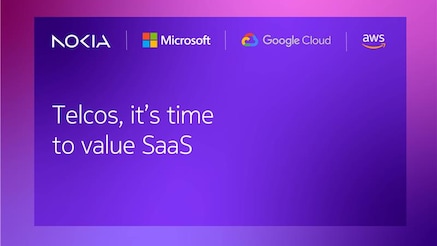
White paper
Telcos, it’s time to value SaaS
Why, when and how to start the journey
How Nokia helps secure and deliver SaaS at scale
The shift from products to software-as-a-service comes with benefits.
Nokia’s approach to telecom SaaS is to improve business agility by significantly reducing the time typically required to realize the value of the investment in the communications business and networking applications. A SaaS business model reduces investments in large upfront capital expenditures and accelerates the ability to launch new services more rapidly, realizing faster time to value
Nokia SaaS is designed specifically for the telecom industry. That means you can trust that it's reliable, secure, and built with your unique needs in mind. With Nokia's deep telecom domain knowledge, you can be confident that their SaaS environment is tailored to the specific challenges and opportunities of your business.
In addition to its technical advantages, Nokia SaaS also offers a digitized experience through its SaaS business platform. This platform enables you to manage your telecom operations with ease, from provisioning and billing to customer service and analytics. With Nokia SaaS, you can streamline your business processes and get the insights you need to make informed decisions.
Finally, Nokia SaaS offers a breadth and depth of portfolio that is unmatched in the industry.
Our mission is to create technology that helps the world act together by delivering innovative, contemporary SaaS networks and services, and enabling Nokia customers to rapidly deliver new, profitable communications services to their respective markets. With a comprehensive suite of SaaS offerings, Nokia can help you meet your business goals and stay ahead of the competition.
Related solutions and products
Solution
Enhance broadband user experience and optimize fixed network operations with prescriptive analytics.
Solution
Enter the world of programmable networks
Product
Analytics and automation for your broadband network
Product
Take advantage of 5G monetization opportunities with Nokia Convergent Charging solutions
Product
5G cybersecurity orchestration and incident response software suite to detect, analyze, and mitigate telco security risks faster.
Product
Create new revenue opportunities and monetize valuable use cases leveraging AI/ML and deep network insights from data analytics.
Ready to find out more about SaaS?
Please complete the form below.
The form is loading, please wait...
Thank you. We have received your inquiry. Please continue browsing.
Learn more about Nokia SaaS solutions
Video
How Analytics-as-a-Service is revolutionizing telecom networks - Episode 1

Blog

Blog
Webinar
Demystifying Telecom SaaS Security with Google Cloud
Webinar
How to implement telecom SaaS as part of the future network strategy

eBook

Article

Blog

Article

Article

Article

Blog
